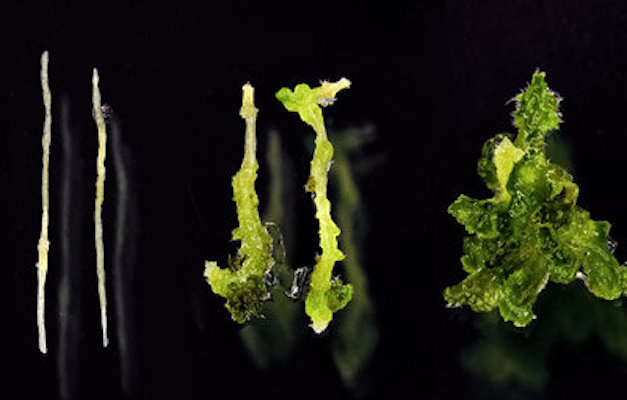Warm temperatures strongly enhance the regeneration of thale cress shoots, plant scientists at RIKEN have found. They have also uncovered the molecular mechanism behind this effect, which will help optimize the regeneration of plant cuttings for both plant-science research and horticulture.
As any gardener knows, in addition to reproducing sexually through pollination, plants can be cloned via cuttings. Plant scientists have been exploiting this ability for nearly a century by nurturing clippings on media enriched with growth hormones.
Research has explored how factors such as temperature, light and humidity influence hormone-induced regeneration of clippings. But the overall picture is confusing since many studies have looked at multiple factors simultaneously and have not tried to relate findings to the underlying molecular mechanisms.
“People have tried all sort of things, like changing the temperature and humidity and putting clippings in the dark or in bright light,” says Keiko Sugimoto of the RIKEN Center for Sustainable Resource Science. “But it has been quite haphazard—just like ‘let’s try this and see what happens’. There hasn’t been any understanding of the molecular mechanisms involved.”
Her team is seeking to bring clarity to the chaos. “Over the last decade, we’ve mapped a key molecular pathway that regulates plant regeneration,” explains Sugimoto. “We’re now in a position to ask how factors like temperature affect this pathway.”
Now, Sugimoto and her co-workers, by comparing clippings grown at 17, 22 and 27 degrees Celsius, have found that warm temperature both promotes the formation of regeneration-competent tissue and subsequent shoot regeneration in the model plant Arabidopsis thaliana. “The effect of temperature was massive,” she says.
The team also identified genes that had their expression enhanced by warmer temperatures, leading to shoot regeneration. “You’d think there must be many, many genes affected by warm temperature, but it turns out only a few genes matter for shoot regeneration,” explains Sugimoto.
These insights into the molecular mechanism of regeneration may now enable the same benefit to be achieved without turning up the heat. “Warm temperature does lots of things, not all of which are necessarily good for shoot regeneration,” notes Sugimoto. “But now that we know the molecular mechanism, we don’t necessarily need to change the temperature—we can just tweak the molecular pathway to have the same effect.”
The team now intends to investigate the effect of temperature on shoot regeneration in other plants. They also want to explore factors such as light and humidity.
Read the paper: Plant and Cell Physiology
Article source: RIKEN
Image: Photograph showing two sets of Arabidopsis thaliana regenerated from clippings at 17 (left), 22 (center) and 27 (right) degrees Celsius. Credit: RIKEN Center for Sustainable Resource Science








